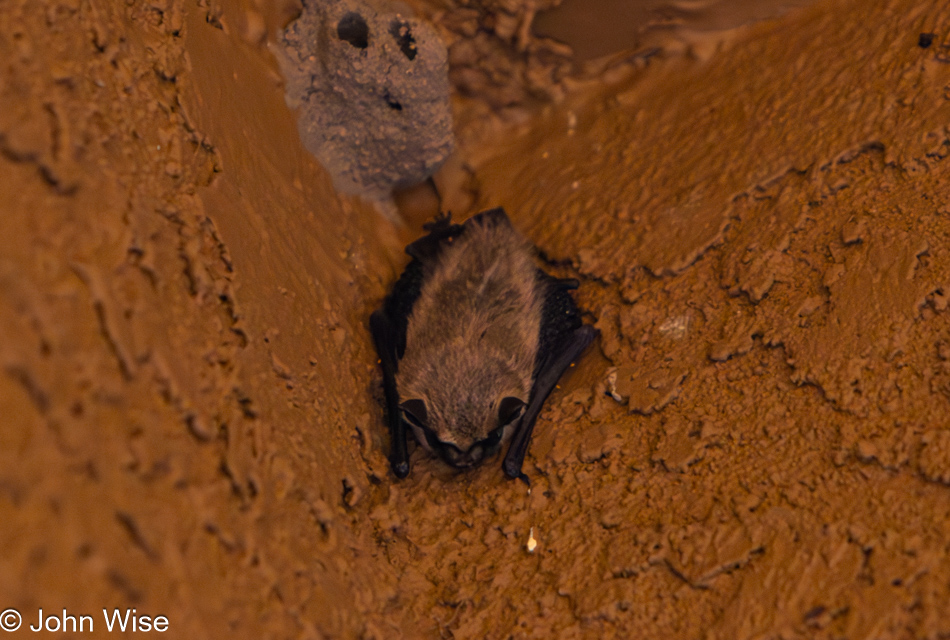
At the beginning of this year, we visited Kartchner Caverns for an after-hours tour of the Big Room. Today, we are once again on our way to Kartchner except this time we are heading into the Throne Room. Our January visit was incredibly impactful. This special photography tour had us linger for more than two hours in a place that typically does not allow visitors to stand and gaze at anything, let alone take pictures. With the Big Room closed in deference to a bat colony that’s busy doing bat things at this time of year, we were offered the opportunity to gather more grand impressions.
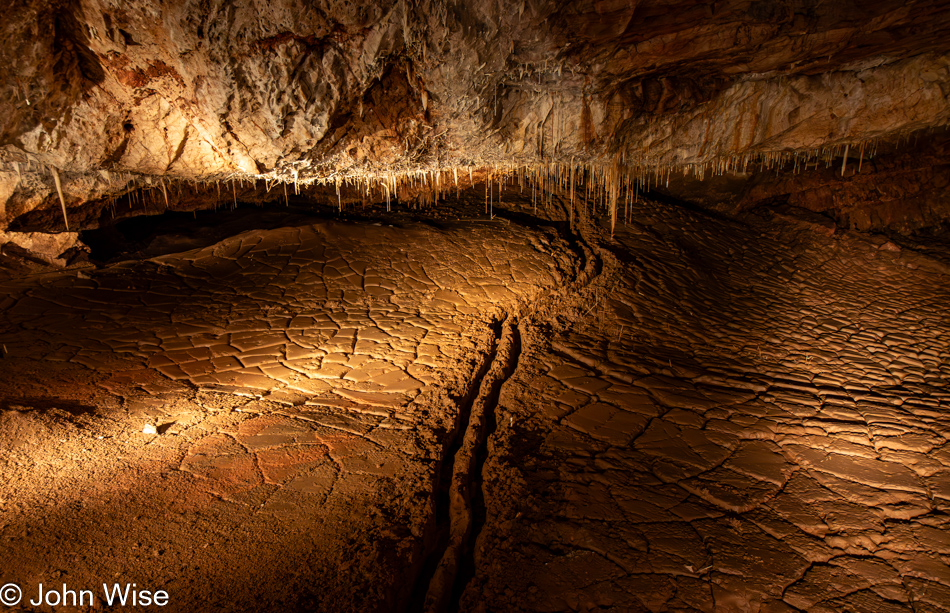
This post is being constrained by a lack of time, though. When I sat down to write about our experience in the Big Room some eight months ago, I had little idea that it would become my second longest post at over 10,000 words of yammering on about the kind of shite I tend to write when unleashed. Even this bit of rambling is occurring prior to our departure for the 180-mile drive south. Right now, it is still Friday morning while I try to get a jump start on the writing because I have a hard stop time arriving on Monday when we will shift dimensions. More about our dimensional shift in the days to come.
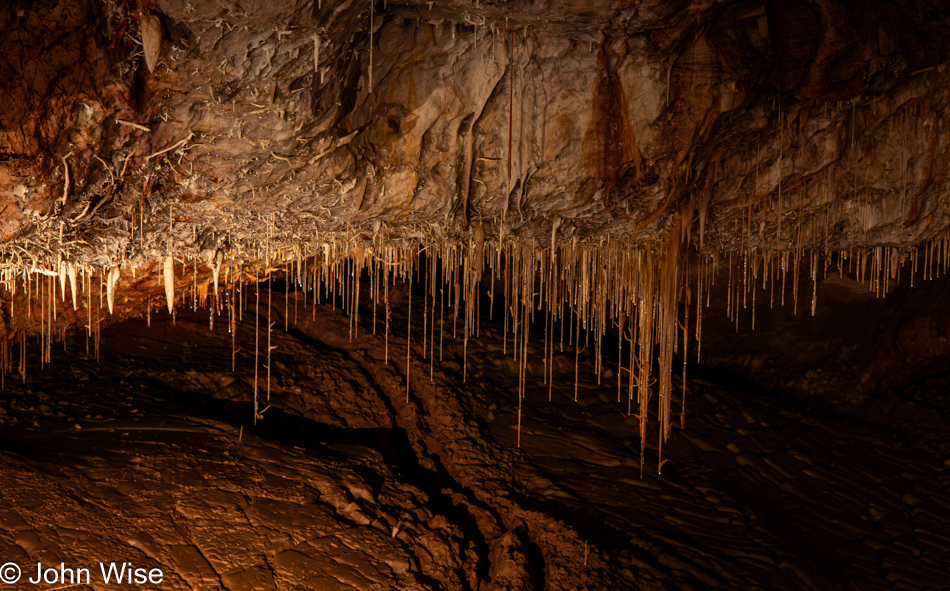
As I mentioned in my post featuring our “Balcony Bat,” this blogging stuff wasn’t supposed to be happening at this time but seeing how I’ll have only posted three missives over the previous 30 days, I’d consider that a solid amount of time off from posting stuff. As of a week ago, I’d forgotten about the rather pricey reservation we’d made just a couple of days after our previous visit, and while Caroline asked about canceling our “last minute” obligation, I’m more inclined to take advantage of this rare opportunity to enter the Throne Room and photograph it. Well, that’s about it for what I’m adding to this post here on Friday; more will follow in the minutes prior to our departure, I hope.

After entering the cavern, we walked into the Rotunda Room, where the mud flats are also found. Here, you can see the original path that brought the two men who first explored the 2.5 miles of passages back in 1974. Gary Tenen and Randy Tufts first trekked into this room, starting the deep trail through the mud that still looks much the same as it has for nearly 50 years. The preservation, methods of visitation, and care shown to Kartchner are meant to preserve this space, so visitors 50 years in the future will see nearly exactly the same thing we are witnessing today. And for your information, the growth of the formations in the cavern will likely be undiscernible in that time frame, even to visitors who walk these passages 200 years from now.
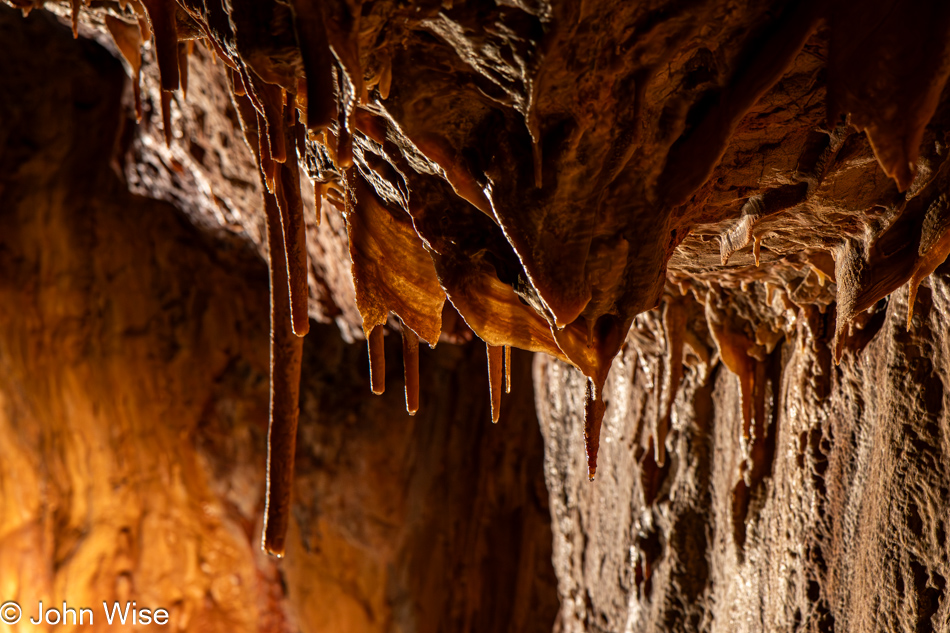
Being in this space is deceptive as far as time is concerned, and that’s probably appropriate, seeing how the heavy, slow hand of time plays its role here. I’m inclined to race through, trying to capture what I think I want to take visually out of the cavern. While two hours initially sounds like an adequate amount of time to photograph the highlights, everything becomes a highlight, and eyes hard at work to scan things as quickly as possible strain to take it all in. I’m armed with my tripod and a 70-200mm lens, but both are mostly cumbersome tools that interfere with moving fast. Not that I want to rush the process, but I have no idea what’s worth taking photos of before I arrive in front of the thing, and each successive thing might be better than the last, so I try to shoot fast and hope to circle back if I realize I hadn’t given proper due to a formation.

There’s much in the shadows worth examining, but the powers that determined where the focus of visitors should be directed made choices to best facilitate moving groups through the space while minimizing their impact. While a couple of hours of visitation with the lights up and not being ushered through in the same way as the typical visitor does, in fact, offer us photography enthusiasts the opportunity to capture the sights for ourselves, searching for the hidden gems is near impossible. So, I chase through, lag, turn back, and hope my eye will catch what the spotlights are failing to show us.

By this time, the zoom lens is put away for the night, I wish for my super wide 10-22mm lens, but its aperture is crap, so I’d have to properly use the tripod and hope I could get close enough to a formation to gain a different perspective. Or, maybe if I had my macro lens, I could approach the molecular edge and see for myself the process of accretion. Well, if my macro was actually a microscope.
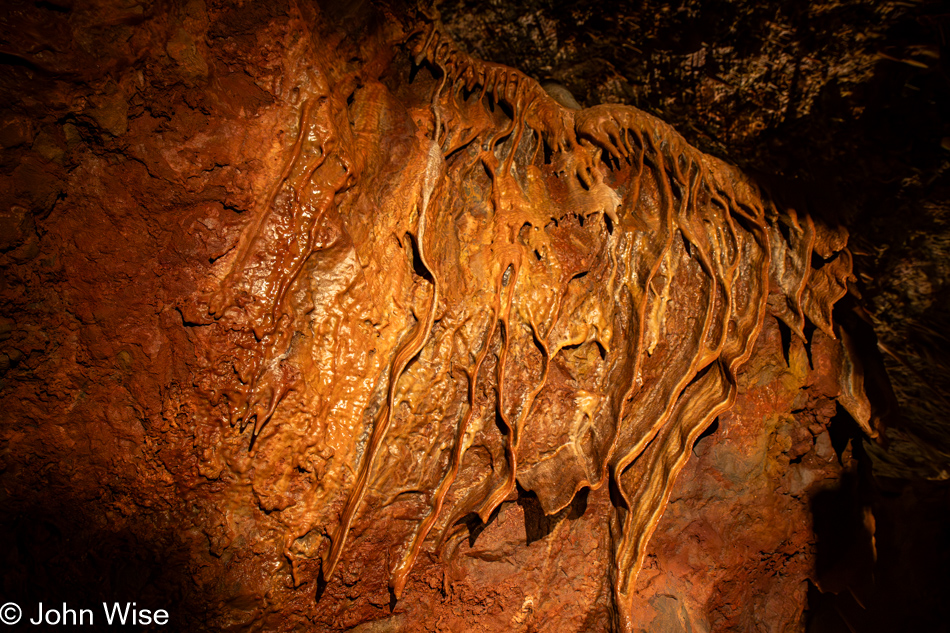
Mineral-wise, these formations are likely quite similar to all other limestone-based cavern formations, and while there are variations of themes regarding forms that evolve in these underground sanctuaries, I never tire of seeing the shapes and patterns melting out of the earth above.
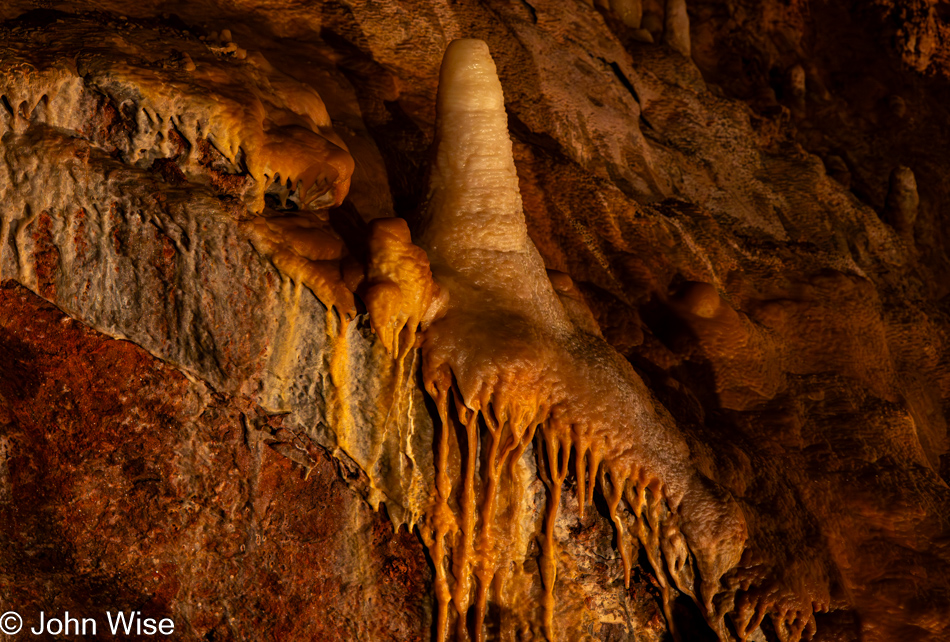
I’m feeling the pressure to cut bait, remove some photos, and curb this struggle to write something or other about our visit and what we found in the Rotunda and Throne Rooms, but I feel that no matter what garbage I manage to capture it will satisfy something of our interest in our memories when so many other corners of our lives are fading into the past.
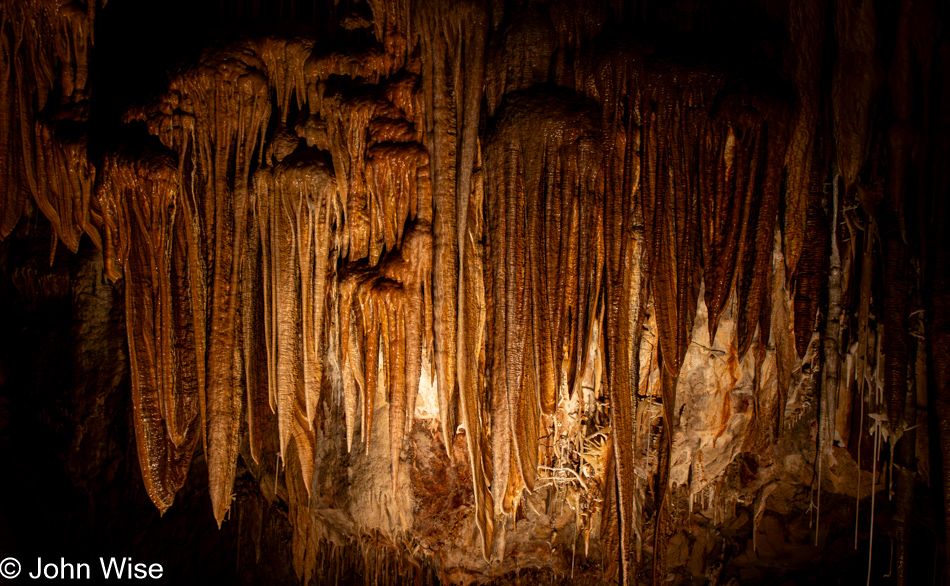
It’s now Monday morning as I return to my struggle of finding metaphors to memorialize the sights we witnessed Saturday evening, which is rendered all the more difficult as I’m pinched by time constraints that see us boarding a flight in little more than 10 hours from the moment I’m turning to finish this post.

With so many dry areas throughout the cavern, it sometimes comes as a surprise when we find something that appears completely drenched. The desire to touch a thing is amplified when our senses demand to know the level of moisture, if any such moisture is even there, or whether the formation is just highly polished.
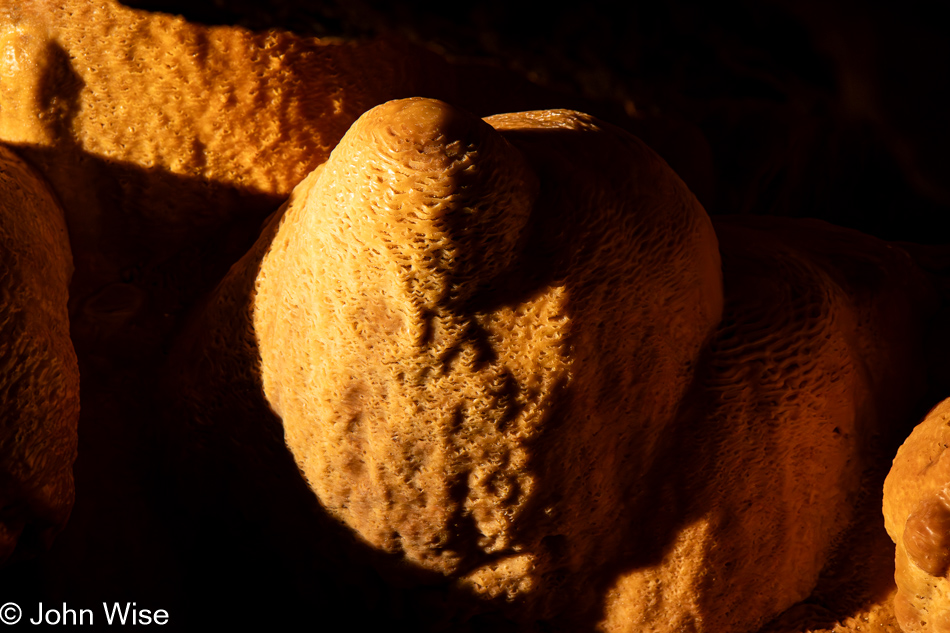
And then you spot an object riddled with a thousand tiny terraces and have no way of learning how this was formed. What I do think I can glean from looking longer at the objects is that on the right of this formation is a beehive-like design/accumulation where water that dripped for thousands of years continued to build up until one day, the drip that formed it was moving slightly to the left and started a new globule that grew atop the old one. Fast forward thousands of more years, and now we have this third bump, or maybe it’s a carbuncle that is emerging above the two older versions.

Being underground and at an uncertain depth, it’s impossible to know how much ground is above us. I’d love to see an illustration of what this area would look like if it were sliced open to expose a cross-section of the earth so we might see why this area is wetter than other areas and produces so many stalactites. From the nearly luminous stalagmite at the center of this photograph, it seems apparent that a seriously long drought was happening during its formation as for millennia it grew thicker before starting to taper off only to start adding girth again.
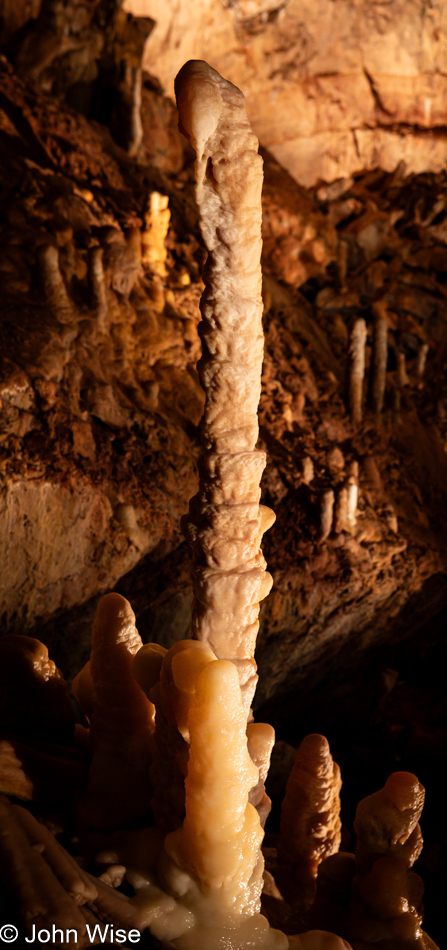
And nature looked within and upon itself, seeing the wisdom of its design; with such inspiration, it realized it was looking at the spine of creatures it would hang bodies from in order to create dogs, cats, fish, elephants, birds, and people. I wanted to work some angle into this about people playing as furries imitating parts of nature’s design, but it was taking too long and I really do need to finish a few things prior to our departure.
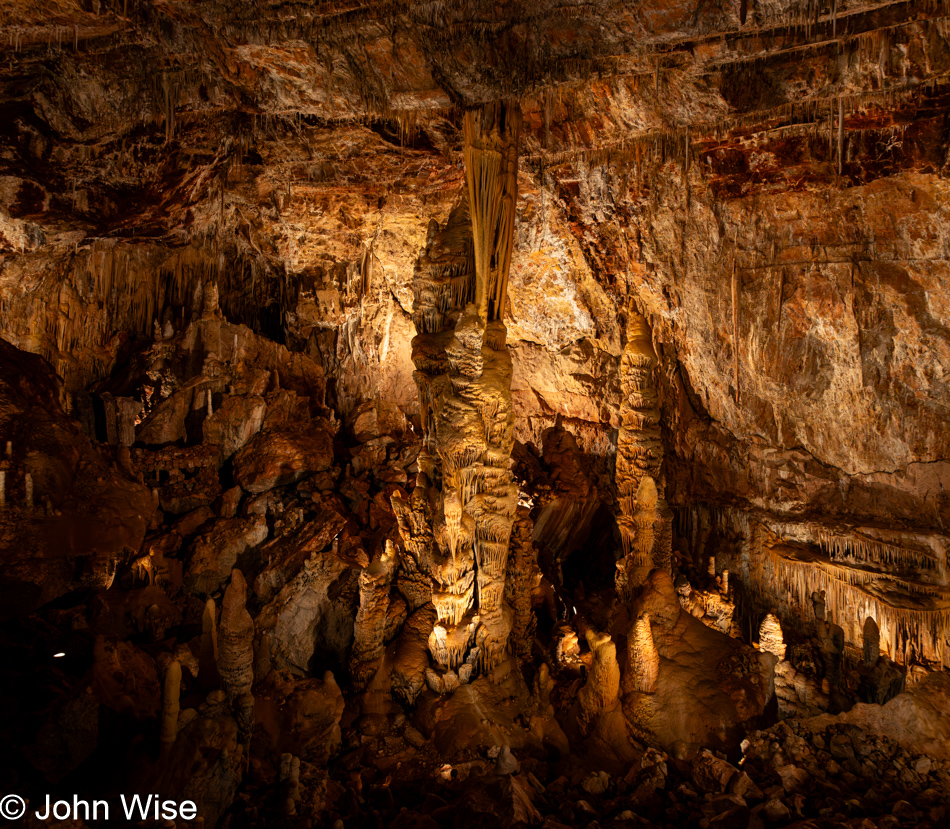
We are now in the Throne Room proper where Emperor Kubla Khan holds court. Grandson of the great Genghis Khan and founder of the Yuan Dynasty, Kubla Khan now sits in a metaphorical effigy at 58 feet tall, a showpiece among cavern speleotherms if ever there was one. But even mighty emperors must bid adieu and leave, and so, with that, we were done with our two hours at Kartchner Caverns and must return post haste to Phoenix in order to continue prepping for a departure that was less than 48 hours away.
